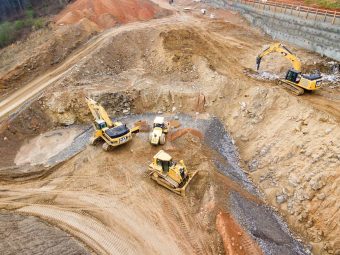
In an effort to reduce its reliance on the import of critical raw materials, which are essential for various industries, including technology, energy, and automotive, Europe plans to increase mining in the coming years. Moreover, new mines will be opened to achieve the goal set by the Critical Raw Materials Act (CRMA), which aims to produce at least 10 percent of these raw materials within Europe.
The question arises: are European mining regulations sufficient to meet such a challenge? The organization Transport & Environment (T&E) commissioned a legal analysis of the 2006 EU Mining Waste Directive (EWD) and outlined what its revision should include. It is noted that although Europe is considered to have the highest environmental standards in the world, it is questionable whether those related to mining waste are adequate or outdated for modern needs.
One of the main conclusions of the legal analysis conducted by the law firm Hörchner Advocaten is the risk that EU member states may apply the Directive in different ways. Furthermore, many important provisions are not clearly defined and are left to each member state to implement at their discretion. For example, it is unclear who is responsible in the event of an accident or damage, as well as how often and to what extent prevention and monitoring plans should be implemented.
Another important conclusion of the analysis is that some of the best available techniques are not mandatory, leaving companies the option to decide on their own. In this case, the example given is filtered tailings dams, a technique for managing mining waste that improves safety and reduces environmental risks associated with tailings storage.
Finally, current regulations regarding environmental protection and the well-being of local communities are not sufficiently robust.
More:
- Greenpeace Studies Vulnerable Marine Mammals in Targeted Deep Sea Mining Area
- Can Government Partnerships Support Responsible and Reliable Critical Mineral Supply Chains?
- Sharp Declines in Critical Mineral Prices Mask Risks of Future Supply Strains as Energy Transitions Advance
Based on the conclusions drawn from the legal analysis, T&E calls on the European Commission to update the Mining Waste Directive and reform it into a new European Mining Waste Regulation. This would ensure the harmonized application of rules across member states. In addition, the best available techniques should become mandatory. Companies should be required to implement them, relying on expert knowledge and guidelines. These guidelines and recommendations on the best available techniques for managing various industrial processes, including mining waste management, are outlined in the Best Available Techniques Reference Document (BREF). This would not only improve environmental protection and safety but would also positively impact communities living near mining sites.
The third proposal put forward by T&E is to rely on the Safety First Guidelines, developed by experts in mining, civil society, and academia. These guidelines provide detailed explanations on how tailings dams should be designed, managed, and closed. Additionally, they establish key financial and governance provisions that should be implemented. Furthermore, in the new regulation, environmental protection measures and community safety should be strengthened, recognizing the significant and long-lasting impacts on land, biodiversity, and human health in the event of tailings dam failure and spillage.
Finally, it is emphasized that communities should be involved in all stages of mining projects through consultations and should be informed of any incidents should they occur.

